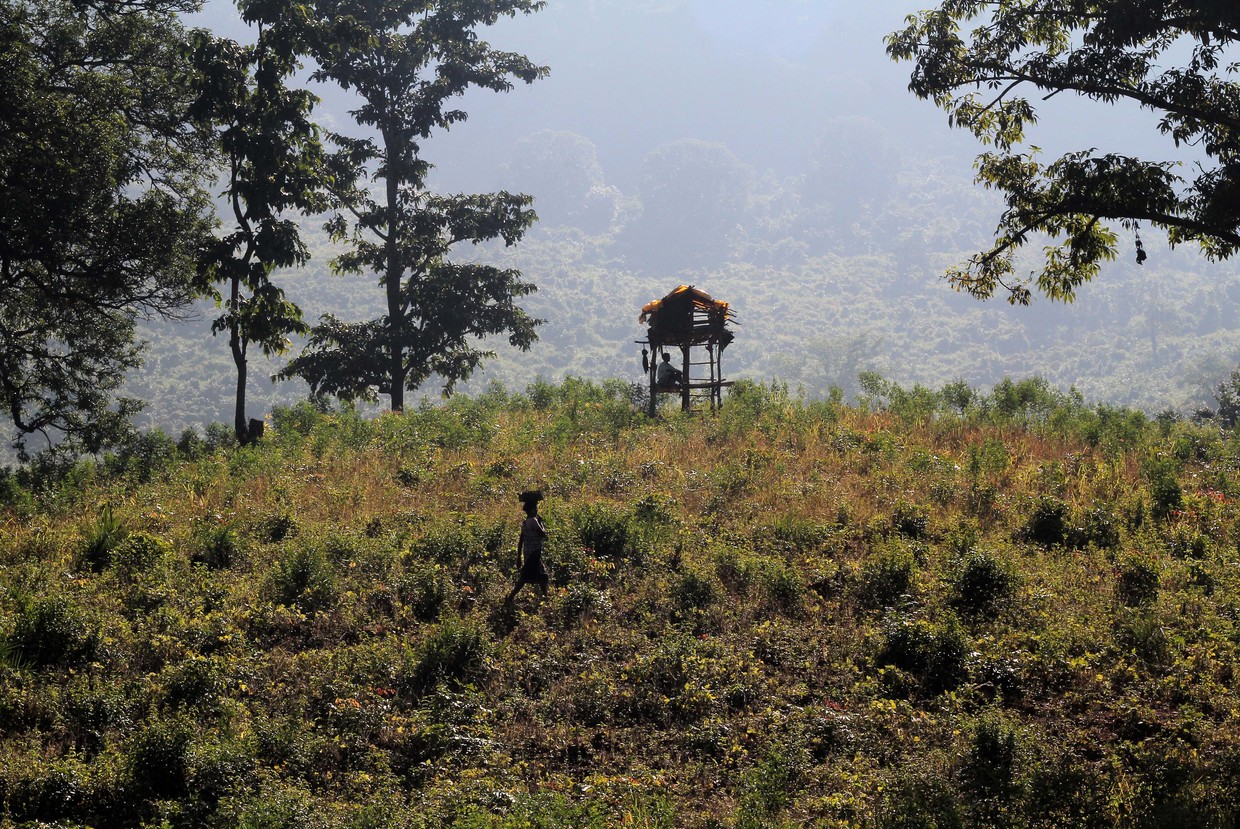Tigers vs tribals: Why are thousands of villagers up in arms against endangered species?

Prioritizing the conservation of tigers over the rights of tribal and forest-dwelling communities in India, the National Tiger Conservation Authority (NTCA) earlier this year ordered the relocation of over 64,000 families in 19 of the country’s ‘tiger states’.
This has sparked a nationwide debate between the NTCA and activists working on tribal rights in India, as it violates several laws, including the Wildlife Protection Act (WLPA) and Forest Rights Act, 2006 (FRA), that aim to undo the historical injustice meted out to indigenous people.
India has 3,682 tigers, according to the last census, which represents 75% of the worldwide tiger population; globally it is an endangered species. This more than met the target of doubling the tiger population (1,411 in 2006) set by the St. Petersburg Tiger conservation declaration in 2010.

The order issued in June to 19 tiger states, including Madhya Pradesh, Chhattisgarh, Odisha, Rajasthan and Karnataka, which have large tribal populations, asked the states’ chief wildlife wardens to evict approximately 591 villages, home to 64,801 families, from these areas, citing slow progress and the perceived threat to tiger conservation. According to right activists, the move places the preservation of tigers over the welfare and rights of tribal communities in violation of other laws.
In response, conservationists and tribal rights activists wrote to Bhupendra Yadav, the union minister for environment, forests and climate change, on September 5, protesting against the order. Another letter on September 9 also criticized the NTCA order. Signatories said they were appalled at the NTCA step directing the relocation of forest-dependent communities, accusing it of “exhibiting a complete lack of compliance with the laws and the spirit of conservation.”
“NTCA action puts pressure on the state governments to relocate communities in violation of WLPA and FRA, thereby forcing the State governments to commit illegalities,” the September 5 letter read. Its authors argue this would lead to “massive conflicts” between state authorities and the tribal population living in the tiger reserves.
Tushar Dash, an independent FRA researcher, told RT that the order violates the Wildlife Protection Act, which was amended in 2006 after the tiger task force report with new provisions which prioritize conservation based on the rights of tribal communities and co-existence. “The definition of ‘inviolate’ has been misinterpreted by NTCA,” he said. “Inviolate does not mean that forest rights cannot be given in core areas. We have a few examples of rights being awarded in core areas like that of Udanti-Sidanadi Tiger Reserve in Chhattisgarh (in central India) along with a few others with successful conservation strategies.”

He added that the order violated the legal conditions for voluntary relocation, which clearly requires recognition of forest rights and consent of Gram Sabhas (village assemblies) prior to initiating any relocation, which has not been done in the tiger reserves.
“We come across cases where forest department authorities are not allowing the implementation of the FRA in tiger reserves, which is in violation of the laws,” he said. “It’s important to note that the tiger task force report clearly stated that the tiger population is declining because rights of tribals are not secured for effective management of tiger reserves.”
Seconding his views, ecologist Pia Sethi said that it was unfortunate that such steps sought to pit tribals and wildlife against each other, even when there are examples where tigers are thriving in areas where forest rights have been vested. Instead, local communities can aid tiger conservation.
“Biligirirangana tiger reserve is one such example, where the Soliga tribe has been vested with Community Forest Rights (CR) and contributes to habitat management and the prevention of poaching,” she said. “It is unrealistic to think of conservation in India without the involvement of local communities. Instead, they can help contribute to the conservation process if given the right opportunities.”

She added that it is a known fact that a lot of tigers are present outside the protected areas, meaning we cannot look at protected areas as islands, but have to devise a holistic strategy to protect tigers and allow for their movement through wildlife corridors connecting one protected area to another, all of which requires the involvement of local communities.
At the same time, many critical forest areas are being diverted for development projects, tourism and plantation activities.
While on one hand the NTCA is passing orders to expedite the relocation of tribals and forest dwellers from core areas, the allocation of 2.8 acres of eco-sensitive land in the Panna Tiger Reserve of Madhya Pradesh to the Oberoi Group for ‘infrastructure’, among others, is causing uproar among activists.
“The emphasis should be on rationalizing and reining in widespread forest diversion rather than targeting vulnerable tribal populations for poorly executed relocations,” she added.

Gobind Sagar Bhardwaj, additional director general (Project Tiger) and member secretary, NTCA, told RT that it was simply a reiteration of its older orders that called for voluntary relocation of tribals.
He further said that the NTCA order meant to take up activities that have already been mentioned in the Tiger Conservation Plan for each tiger reserve, where there is a zone plan for voluntary village relocation that has to be done as per the guidelines.
Sethi further argued that tiger censuses have been reporting an increase in tiger numbers with the existence of local communities inside protected areas. “Given this, is it even necessary to relocate them?” he wondered. “We need to undertake proper studies to determine the ecological impact of local communities on tigers and the ecosystem before passing such orders.”
To this, Bharadwaj said that the voluntary village relocation is part of the management of the tiger reserve, implemented since the establishment of the NTCA. In the past, reviewing and monitoring of the voluntary village relocation was undertaken and done regularly.
The letter to Yadav by the experts called for the withdrawal of the ‘illegal relocation’ order and to stop all proposed relocations from the tiger reserve. The activists also demanded the discontinuation of the enclosure-based model of conservation and adoption of the community-governed model of conservation governance as per the FRA.
It further asked for another advisory from the NTCA directing the authorities of all the tiger reserves to ensure just, effective and full implementation of all the provisions under Section 38 V of the WLPA and to issue a clarification order to all the chief wildlife wardens of the tiger states, explaining the word ‘inviolate’ as read by law means “without affecting the rights of forest dependent communities.”

The NTCA responded that the guidelines give in detail the procedure to be followed, which clearly lays out that the process is voluntary and with informed consent of the Gram Sabha and of the persons affected.
“The spirit of the letter is ill conceived and misinterpreted for which the NTCA cannot be held responsible,” Bharadwaj said. “Why is attention suddenly given to regular ongoing activities across tiger reserves? The NTCA continuously receives proposals from various reserves regarding voluntary village relocation which is part of the Tiger Conservation Plan and it is reviewed and supported regularly.”
Bharadwaj asserted that the NTCA letter is not in contravention of any law and that the “status quo will be maintained” even after activists urged its retraction.















